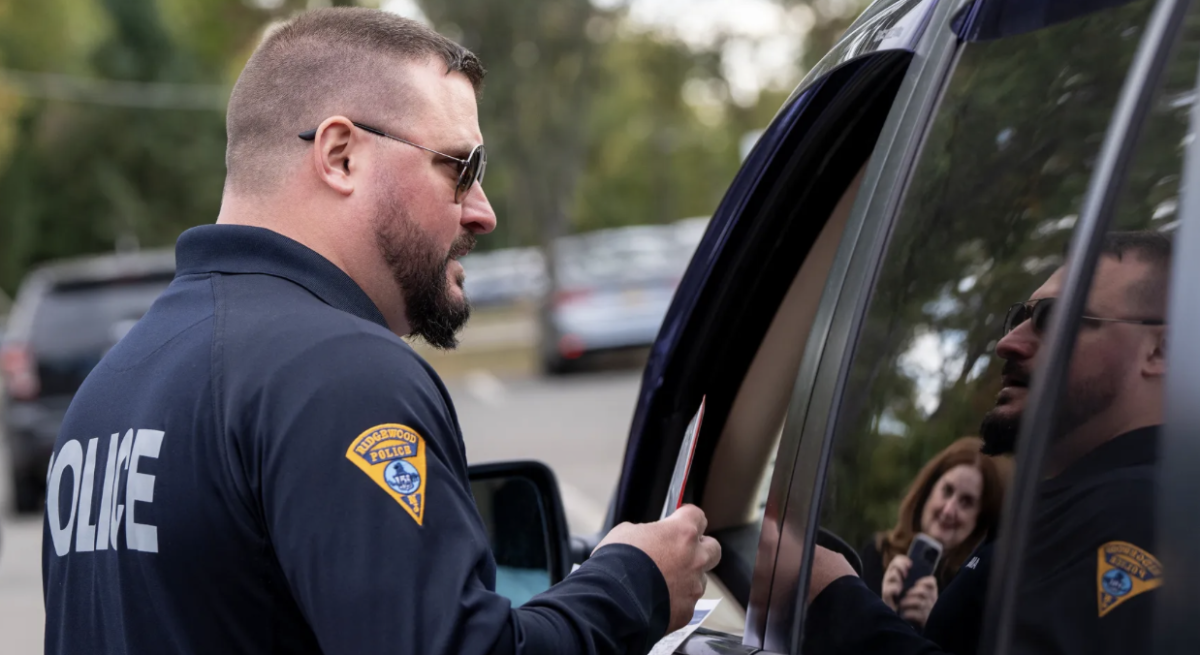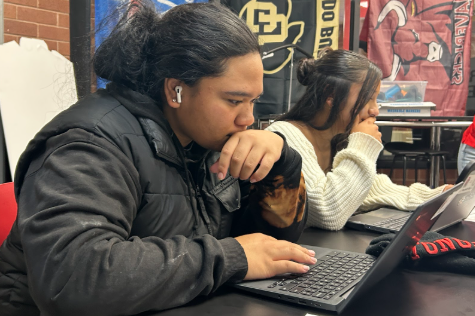Feature Photo Provided By: www.progressive.org – Whether it be guns, semi-automatic rifles or fully automatic rifles, are lethal weapons necessary in the developed world? Or are they just apart of America’s obsession with guns?
Imagine this: it’s the middle of the week and a little after 6 p.m. when you and your family climb into the car to go to the grocery store. Minutes later, your father is pulling into a parking space at a Walmart Supercenter. Your siblings race each other to fetch a cart for your mother, while your father retrieves his cellphone to look at the grocery list. Now your siblings are racing each other to the kid’s section, which means you’re in charge of bringing them back.

Everything seems so normal. Friends, family, and couples are browsing the aisles, walking around, checking out their items, or exiting the store with their purchased goods. In a suburban part of Colorado where violence is a rarity, many would say that no one expected the shooting that took place on November 1st, 2017 at the Walmart Supercenter in Thornton to take place.
Another shooting, another domestic attack, and more dead and afraid than before. The perpetrator responsible for this shooting was a middle-aged white male named Scott Ostrem. Accused of firing into the Walmart, his random gunfire fatally struck three victims, leaving the rest of the shoppers afraid and employees fleeing. Although there were shoppers inside who carried concealed weapons, it was unclear to those around who was shooting and from where; the same conclusion the police drew when opening their investigation.
With mass shootings — both large and small — happening more and more frequently, a simple trip to the grocery store, school, work, church, or even a concert is now questionable as to how safe it is.
Whether these massacres are happening at a Walmart Supercenter, a movie theater, a musical festival in Las Vegas, or at an elementary school in Connecticut, one thing is for certain: people are turning to guns more often than usual. Even with gun control being enforced nationally as well as on state level, this has yet to stop mass shootings from occurring.
So, you might be wondering: what are the benefits of gun control? What are the consequences of having them in place, aside from the fact that mass shootings exist? The laundry list goes on forever and ever, but here are a few pros and cons about gun control:
| Pros | Cons |
| Less shootings | It has yet to deter gun-related crime or murders |
| Self-defense | Accidental or irresponsible shootings |
| Gun Registration and License | Criminals or mentally ill individuals can purchase one from the Black Market or obtain one from someone they may know |
| Anyone can purchase a gun | As previously stated, anyone from hunters, ordinary citizens that want that extra layer of protection, to criminals and mentally ill can purchase and/or obtain weapons |
| Carrying a concealed weapon is not directly backed by the Second Amendment but is supported by it | On the other hand, the Second Amendment has its limits, the Founding Fathers did not anticipate citizens carrying bazookas, explosives, automatic or semi-automatic weapons for “protection” |
“[Nowadays] People decide to solve problems by shooting others,” said Mrs. Walsh, a social studies teacher who teaches government, politics, and civics. “That’s how they decide to solve their problems. It seems like they’re angry and go to a gun, there’s no in between in our society.”
In her opinion, Walsh believes, “lack of communication and lack of teaching empathy” is not only present in our society, but has impacted some individuals in a strong, negative way.
She continues to prove her point by stating there were “red-flags” that existed in some of the mass-shooting cases, but not a lot of people paid attention to them or acted upon those warning signs in time. The example she used, Devin Kelley, the one responsible for the Sutherland Springs church shooting, had a history of “domestic violence and child abuse,” she mentioned.
Not only that, but according to CNN, research claimed Kelley had a history of purchasing animals off of Craigslist to use as target practice, and would make morbid jokes at work about murdering people.
As for Officer Condreay, who has worked with the Aurora Police Department for 14 years now, she said similar things about the exponential increase in gun-related violence.
Condreay said, “People are becoming more violent, not necessarily towards anybody that they’re connected to; they’re specifically targeting random people as a means of expressing their anger, frustration, or whatever their issues are,” continuing on to say, “and it’s becoming more prevalent.”

Unfortunately, Condreay is correct. Compared to other countries, America has a distinctive problem with gun-related crimes, whether homicide or suicide or a combination of both. Data collected by journalist John Haltiwanger from Newsweek found 244 mass shootings last year. Another journalist from the Washington Post collected a total of 354 mass shootings from 2015-2017.
Although most states require citizens that purchase guns to register them, Condreay says: “. . . it’s not a requirement for every state to be registered, we have no idea how many guns are out there, who owns them. People can obtain guns without ever going to the store to purchase one. . .”
However, here in Colorado, it is legal to carry a concealed weapon, but in neighboring states such as Arizona, Kansas, and Wyoming they do not require permits to carry handguns or lethal weapons.
When asked about the trend of mass-shootings happening in our country, history teacher Mr. Hamilton believed it to be mental health, and the lack of conversation America has about it.
“We’re missing the big issue here,” Hamilton stated. “We need to focus more on people and we need to focus more on why.”
All three interviewees agreed that weapons themselves are not the one to blame, but rather the person who uses it with ill purpose. Whether that purpose stems from mental health, criminal behavior, self-defense, being pro-second amendment or the like, people are turning to weapons as a source of resolution more than anything else.
When will it end? When will change come about? Every day, every hour someone dies by the hands of someone else pulling a trigger. Is the solution stricter or more lax gun laws? Banning guns altogether? Increasing the price of bullets? Or is it the moral questioning behind it all – the “red flags” that people overlook?
Maybe it’s the build-up before someone snaps and goes to a gun to resolve their issues. Or perhaps the intense gun culture that our country has, that other nations don’t. Could it even be a mental health dilemma? Too many problems, too many solutions, and the gun debate will continue unless necessary precautions and actions are taken into consideration. Sweeping things under the rug is a typical thing in our society, but it has not gotten us very far.
As for Rangeview, a school where people come from across the nation as well as across the world and many believe there is a very accepting culture of all people, terrorism can happen here just like anywhere else, many interviewed said.
Walsh suggests a class on resolving “a conflict without going to violence,” so the more students that are aware of gun control and gun-related crimes, the less students that are scared or unwilling to talk about their problems.
Hamilton suggests students and faculty members begin to “understand one another,” so that warning signs are noticed and people can act, which could prevent more pain further down the road.
Condreay concluded with reminding students and faculty members about wearing IDs and not propping open doors for people who do not belong in this building. That it is everyone’s responsibility to make sure our community remains safe and aware of the dangers that could “very well happen.”
For more information about gun control, visit: www.gun-control.procon.org. If interested in the statistics discussed in this article, click on: www.vox.com/policy-and-politics, www.washingtonpost.com, and www.newsweek.com.






